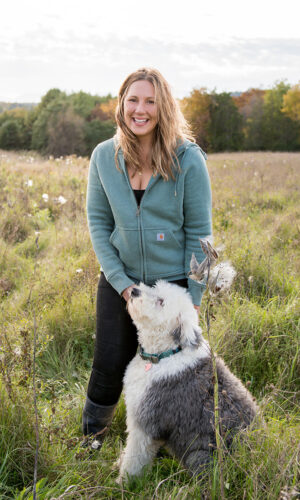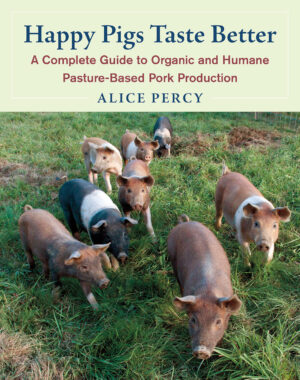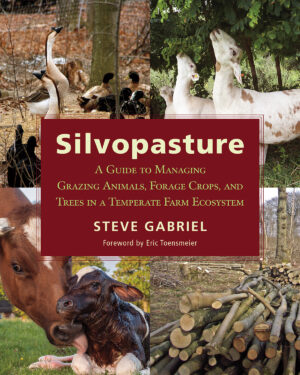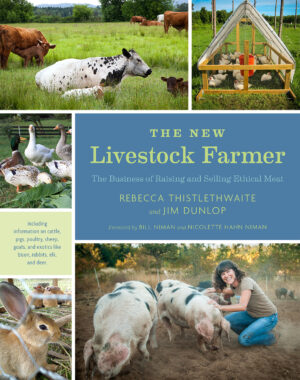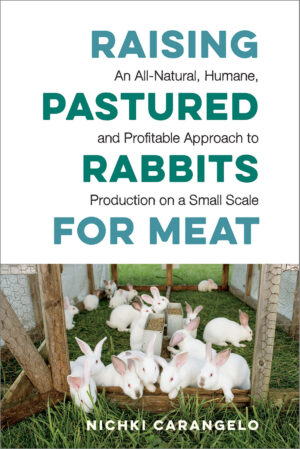Raising Pastured Rabbits for Meat
An All-Natural, Humane, and Profitable Approach to Production on a Small Scale
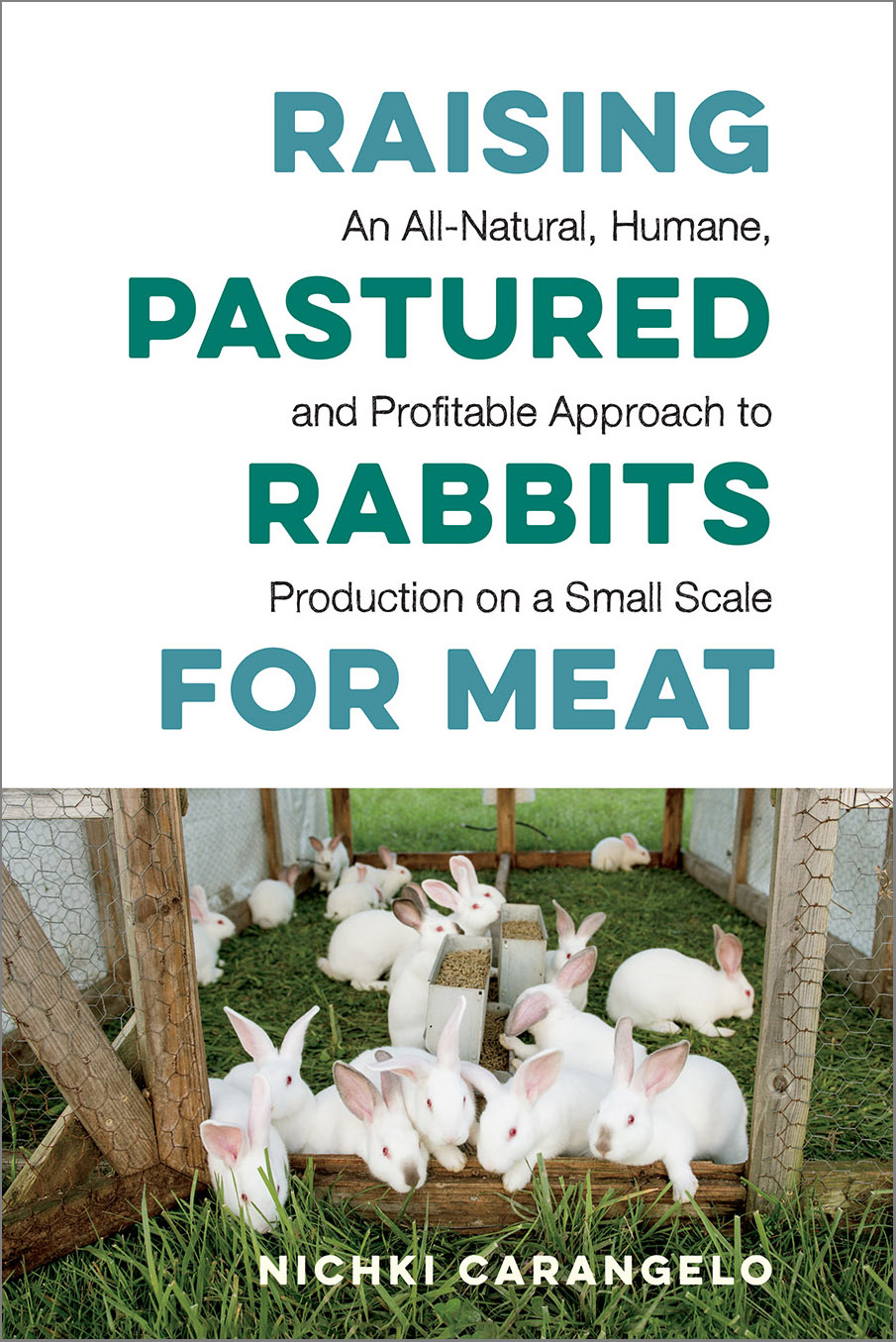
EXCERPTS
| Pages: | 224 pages |
| Book Art: | Full-color photographs throughout |
| Size: | 6 x 9 inch |
| Publisher: | Chelsea Green Publishing |
| Pub. Date: | December 10, 2019 |
| ISBN: | 9781603588324 |
Raising Pastured Rabbits for Meat
An All-Natural, Humane, and Profitable Approach to Production on a Small Scale
An accessible, practical resource for pasture-based rabbit production-complete with rabbit husbandry basics, enterprise budgets, and guidelines for growing, processing and selling rabbits commercially.
In recent years, there has been talk in the food world that rabbits make more sense than chicken. In a country with a $41 billion broiler chicken industry, this might seem like a pretty bold statement, but it’s hardly unsubstantiated. And yet while media has been abuzz about the supposed super protein, very few farmers are stepping up to meet the rapidly increasing interest in sustainably raised rabbit meat. This is partly due to the lack of available resources in the field of rabbit husbandry.
Raising Pastured Rabbits for Meat is the first book to address the growing trend of ecological rabbit husbandry for the beginning to market-scale farmer. Inspired by Daniel Salatin, who has long been considered the pioneer in integrated rabbit farming, Nichki Carangelo proves that a viable pasture-based rabbitry is not only possible and user-friendly, it’s also profitable.
In Carangelo’s approach, happy, healthy rabbits are seasonally raised outside on pasture, using a pasture and wire hybrid system that promotes natural behaviors and a diverse diet, while effectively managing the associated risks. Raising Pastured Rabbits for Meat offers valuable information on how farmers can build their own rabbit enterprise from scratch and includes tips on breed selection, breeding techniques, nutrition guidelines, record keeping tools, slaughtering and butchering instructions, marketing advice, and enterprise guides to help farmers plan for profitability. This is an essential guide for anyone interested in integrating rabbits onto a diversified farm or homestead.
Reviews and Praise
“Nichki Carangelo’s Raising Pastured Rabbits for Meat is like a long chat with a warm and generous friend who’s sharing advice based on her own experience, hard won from both her successes and her mistakes (which you won’t have to repeat). Her approach is pragmatic and flexible, never doctrinaire. Perhaps her best advice is to avoid rabbit ‘monoculturing,’ which is only likely to succeed at an unattainably large scale, and instead to make your rabbit marketing venture an integral part of a diverse and adaptable small farm.”—Harvey Ussery, author of The Small-Scale Poultry Flock
More Reviews and Praise
“Raising Pastured Rabbits for Meat covers some of the ups and downs of a rabbit-raising start-up, as well as the emotions and real-life mistakes tied to starting a farm. Overall it’s a well thought out introduction to pasture-based rabbit production for beginners.”—Daniel Salatin, Polyface Farm
“They’re cute, fluffy, and one of the world’s most sustainable sources of meat. Yes, rabbits can make an excellent food source and income stream for a diversified family farm or homestead. Farmer and author Nichki Carangelo clearly lays out the essentials you need to start, manage, and grow a meat rabbit business in a way that not only generates income but also treats the animals humanely. There isn’t another book out there like this on the subject.”—Rebecca Thistlethwaite, author of The New Livestock Farmer
“As a rabbit farmer and chef who prizes rabbit as a heritage ingredient, I’ve been encouraged to see more farmers, cooks, and consumers rediscovering the benefits of pastured rabbit in recent years. With this book Carangelo provides a growing community of small-scale producers with an essential road map for the journey of launching a small rabbitry into a successful business and long-lasting, nourishing resource.”—Mike Costello, chef and farmer, Lost Creek Farm
Reviews and Praise
“Nichki Carangelo’s Raising Pastured Rabbits for Meat is like a long chat with a warm and generous friend who’s sharing advice based on her own experience, hard won from both her successes and her mistakes (which you won’t have to repeat). Her approach is pragmatic and flexible, never doctrinaire. Perhaps her best advice is to avoid rabbit ‘monoculturing,’ which is only likely to succeed at an unattainably large scale, and instead to make your rabbit marketing venture an integral part of a diverse and adaptable small farm.”—Harvey Ussery, author of The Small-Scale Poultry Flock
“Raising Pastured Rabbits for Meat covers some of the ups and downs of a rabbit-raising start-up, as well as the emotions and real-life mistakes tied to starting a farm. Overall it’s a well thought out introduction to pasture-based rabbit production for beginners.”—Daniel Salatin, Polyface Farm
“They’re cute, fluffy, and one of the world’s most sustainable sources of meat. Yes, rabbits can make an excellent food source and income stream for a diversified family farm or homestead. Farmer and author Nichki Carangelo clearly lays out the essentials you need to start, manage, and grow a meat rabbit business in a way that not only generates income but also treats the animals humanely. There isn’t another book out there like this on the subject.”—Rebecca Thistlethwaite, author of The New Livestock Farmer
“As a rabbit farmer and chef who prizes rabbit as a heritage ingredient, I’ve been encouraged to see more farmers, cooks, and consumers rediscovering the benefits of pastured rabbit in recent years. With this book Carangelo provides a growing community of small-scale producers with an essential road map for the journey of launching a small rabbitry into a successful business and long-lasting, nourishing resource.”—Mike Costello, chef and farmer, Lost Creek Farm


